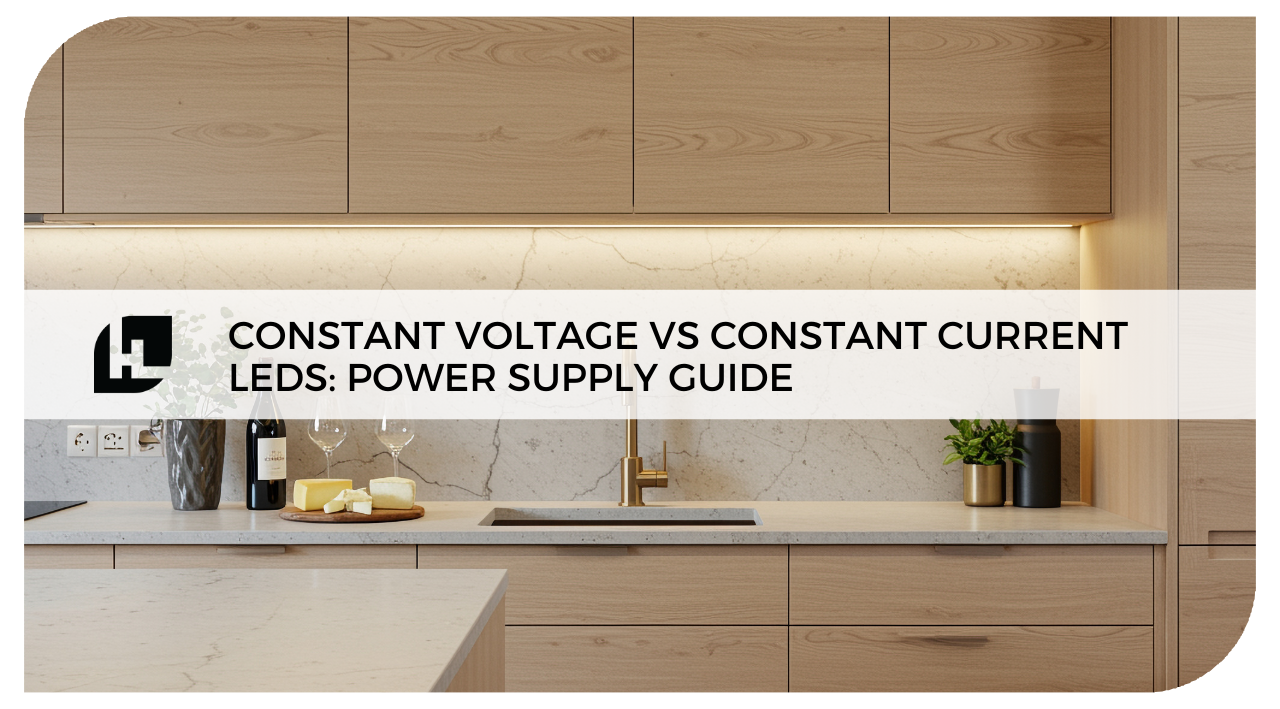Introduction
LED technology has transformed modern lighting with its energy efficiency, long lifespan, and design flexibility. However, one common source of confusion lies in understanding the difference between constant voltage and constant current LEDs and selecting the appropriate power supply. Choosing the wrong type can lead to reduced performance or even damage. Clearing up the confusion around LED types and power supply compatibility will help you make informed, reliable decisions.
What Are Constant Voltage LEDs?
- Standard Voltage Ratings: Usually 12V or 24V.
- Internal Current Regulation: Often include a simple resistor or current-limiting device.
- Common in LED Strips: Found in LED tape lights, under-cabinet lighting, and some retrofit modules.
- Ease of Installation: Compatible with simple power supplies.
- Scalability: Ideal for applications requiring multiple LED modules.
- Availability: Widely available and cost-effective.
- Efficiency: Slightly lower due to internal resistors.
- Limited Current Control: Overloading can reduce lifespan.
What Are Constant Current LEDs?
- Defined Current Rating: Common values include 350mA, 500mA, 700mA, etc.
- Voltage Fluctuation: Voltage changes based on the load or number of LEDs.
- Precise Control: Designed for professional and high-performance applications.
- Higher Efficiency: Improved energy management and thermal performance.
- Longevity: Better lifespan due to precise current regulation.
- Consistent Brightness: Especially in high-powered or commercial installations.
- Complex Installation: Requires compatible LED drivers.
- Higher Cost: More expensive components and drivers.
Constant Voltage vs Constant Current LEDs: Key Differences
Feature
Constant Voltage
Constant Current
Power Supply
Fixed Voltage (e.g., 12V)
Fixed Current (e.g., 350mA)
Voltage Behavior
Stable
Varies with load
Current Control
Internal resistors
External driver
Applications
LED strips, signage
Spotlights, downlights
Efficiency
Lower
Higher
Brightness Consistency
Variable
Stable
Understanding LED Power Supply Compatibility
- Use a constant voltage power supply.
- Match output voltage to LED rating (e.g., 12V supply for 12V LED strip).
- Ensure sufficient wattage for total load.
- Use a constant current LED driver.
- Match driver’s current rating to LED’s requirements (e.g., 700mA driver for 700mA LED).
- Confirm voltage range covers total forward voltage of LED chain.
Choosing the Right LED Power Supply
- Identify LED Type: Confirm whether it's constant voltage or constant current.
- Check Electrical Ratings: Voltage and current specifications must match.
- Calculate Load Requirements: Total wattage or forward voltage for all LEDs.
- Include Safety Margin: Use a driver with at least 20% more capacity.
- Consider Dimming: Ensure the power supply supports dimmable functions if needed.
LED Driver Types: How to Choose Wisely
- Use With: LED strips, signage, low-power installations.
- Features: Simple, affordable, often dimmable.
- Use With: High-power LEDs, architectural lighting.
- Features: Thermal protection, dimming compatibility, advanced circuitry.
- Dual Functionality: Some advanced drivers can switch between constant voltage and current modes.
- Use Case: Versatile applications where both LED types are used.

HitLights' 12 V 5‑in‑1, 200 W dimmable driver is an example of constant-voltage driver—outputting a steady 12 V DC, capable of delivering up to 16.7 A


